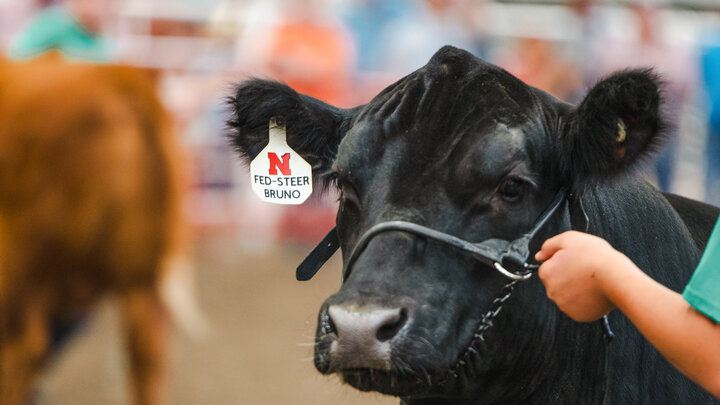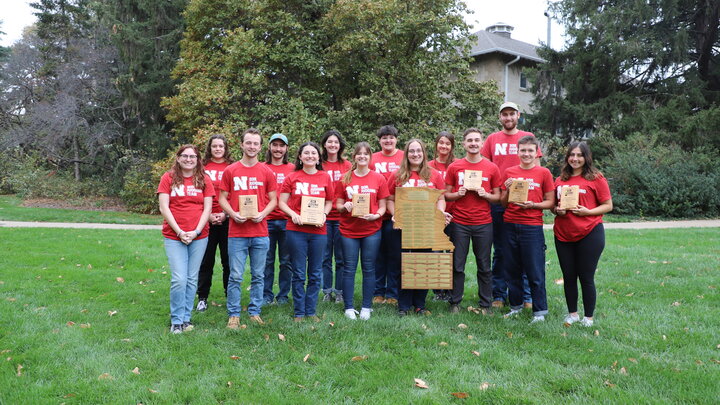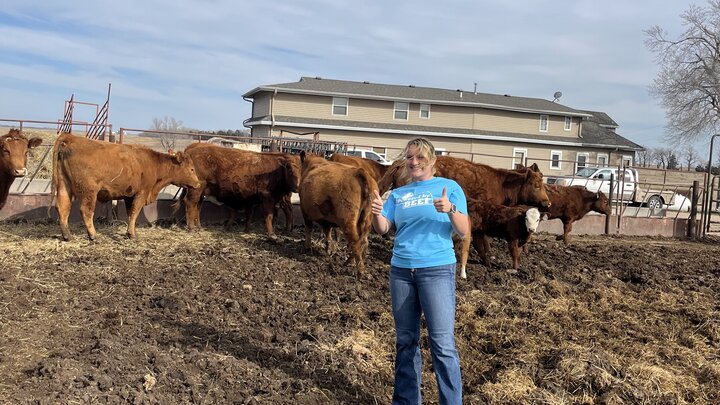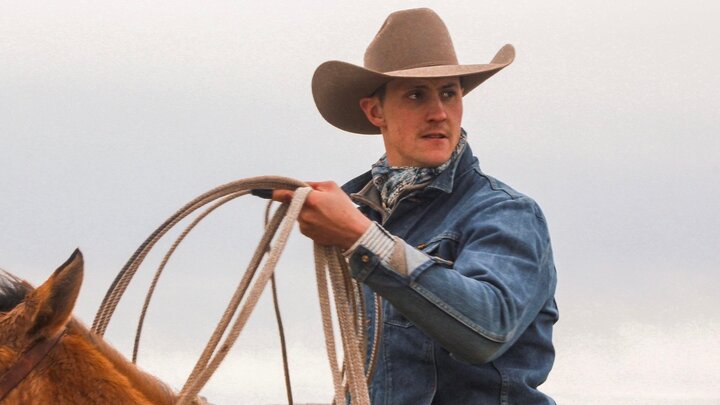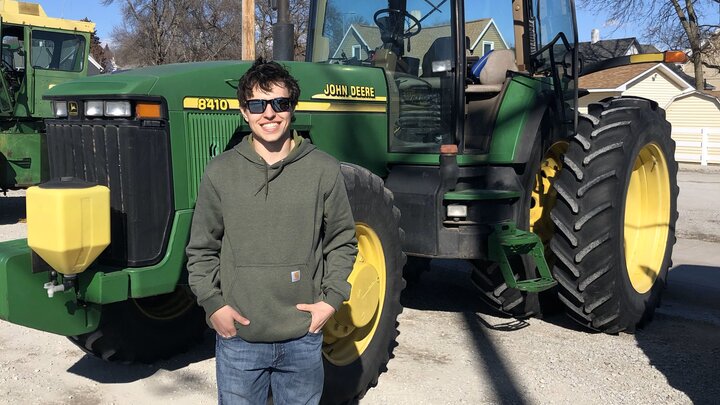Interviews with Toni Rasmussen and Ashley Benes
Agricultural education has and will continue to be an important aspect of the Nebraska education system. Between providing students with opportunities to explore career paths and challenging them to become leaders, 4-H and FFA programs, housed within the Institute of Agriculture and Natural Resources (IANR), work together to invest in today’s youth and build a stronger future for the state of Nebraska.
Nebraska agricultural educators Toni Rasmussen and Ashley Benes are making significant impacts on Nebraska youth daily.
Rasmussen is the agricultural educator and FFA advisor at Wayne High School, and Benes is the statewide 4-H youth development coordinator at Nebraska 4-H. Both are alumni of the University of Nebraska-Lincoln College of Agricultural Sciences and Natural Resources (CASNR) and have contributed to the success of these important programs.
“IANR’s impact on agriculture in Nebraska is instrumental,” Rasmussen said. “Oftentimes, it is under the radar, but IANR has really touched every part of agricultural education in the state.”
IANR Supports Agricultural Education
With agricultural education programs in nearly every Nebraska county, IANR’s impact stretches far beyond Lincoln city limits. However, the heart of agricultural education in Nebraska is found on the university’s East Campus in CASNR.
As an agricultural education student, Rasmussen took CASNR courses that explored all the major pathways of agriculture, including plants, animals, natural resources, and agribusiness. Rasmussen’s experience in these CASNR courses pushed her to deepen her understanding of multiple aspects of agriculture.
“CASNR impacted my career path by providing all sorts of opportunities while I was in college,” Rasmussen said.
These opportunities continue to help Rasmussen in her role as she connects with her students and directs them to different career opportunities in the agricultural industry.
Benes also attributes her CASNR experience to her career successes. While navigating the challenges of choosing a career path, Benes found that CASNR helped her build connections in multiple focus areas. These connections are just as important to Benes today as they were before she graduated.
“The connections and the networking that still are provided to us from those in CASNR help me do my job and make my life a lot easier,” Benes said.
Specifically CASNR, but more largely IANR, devotes great energy and focus to maximize its impact on agricultural education in Nebraska. The opportunities, resources, and support it provides students create a passionate group of educators who continue to shape the future of agriculture through today’s youth.
The Impact of 4-H and FFA Programs
Agricultural educators carry on the impact of IANR by creating opportunities, connections, and community for youth. For Benes, one of the best aspects of her job is providing students with a safe place to discover their passions or career paths through 4-H projects.
“4-H creates opportunities for kids to explore and create their own program,” Benes said. “We have hundreds of projects in 4-H. Students can literally find a spark in anything.”
4-H and FFA also help youth connect with peers, leaders, and industry professionals. These connections help students learn more about different industries while gaining confidence in their identity.
“My favorite aspect of my job is seeing students go from a shy freshman to a confident senior who is confident in who they are, where they fit in the world, and what they want to do,” Rasmussen said.
4-H and FFA are spaces designed for youth to have the safety net to explore different areas of agriculture and STEM, find out what sparks their passions, and gain self-confidence.
The Future of Agricultural Education in Nebraska
With urban populations growing and rural populations dwindling, agricultural literacy is growing increasingly important in Nebraska. For youth, agricultural literacy is important because it helps them understand Nebraska industry, connect with their food, and become strong leaders.
“We recognize that even in Nebraska, kids are generations removed from the farm,” Benes said. “It is important for them to see that Nebraska is an incredibly agriculturally based state. From an economic standpoint, having a working knowledge about agriculture becomes really important.”
In the future, both Rasmussen and Benes would like to see an increase in agricultural education programming in Nebraska. Most of all, both would like to see students continue to gain experience in new areas, especially through opportunities in 4-H and FFA. To them, the learning element of these programs is much more important than any ribbon or award.
“I do not care if students get last in a contest,” Rasmussen said. “If the student went, was on time, learned something, was respectful, and had fun – we won.”
For more information about Nebraska 4-H and FFA, visit 4h.unl.edu or neaged.org respectively. For more SDN stories, visit sdn.unl.edu.
Key Takeaways
- Agricultural educators like Toni Rasmussen and Ashley Benes build the future of agriculture in Nebraska daily by providing youth with opportunities to find their spark through 4-H and FFA programs.
- IANR provides students at the University of Nebraska-Lincoln with opportunities, resources, and support to create a passionate group of educators who continue to shape the future of agriculture through today’s youth.
- 4-H and FFA provide spaces designed for youth to have the safety net to explore different areas of agriculture and STEM, discover what sparks their passions, and gain self-confidence.
- Between providing students with opportunities to explore career paths and challenging them to become leaders, 4-H, FFA, and CASNR are all working together to invest in today’s youth and build a stronger future for the state of Nebraska.
- For more information about Nebraska 4-H and FFA, visit 4h.unl.edu or neaged.org respectively.
